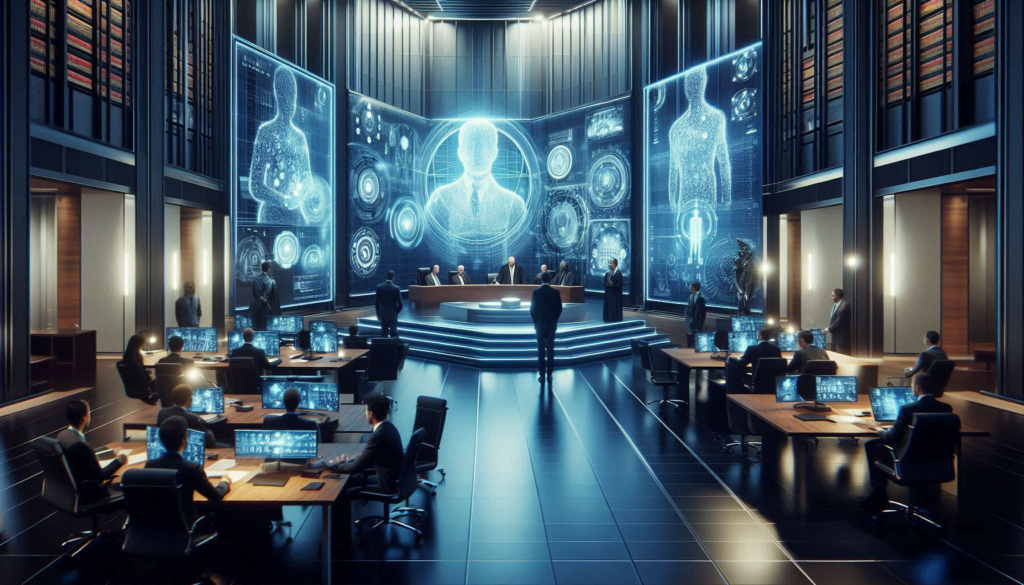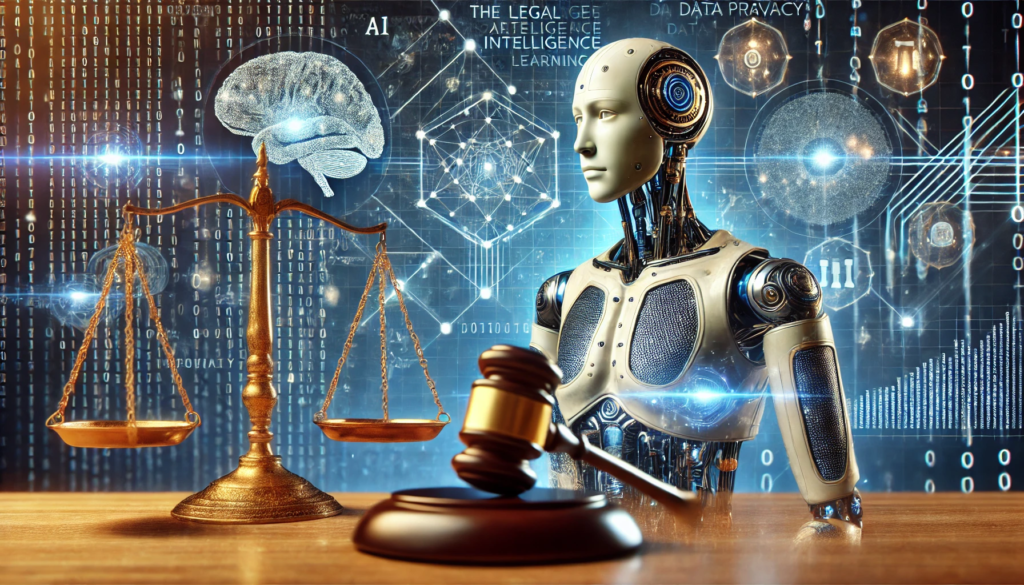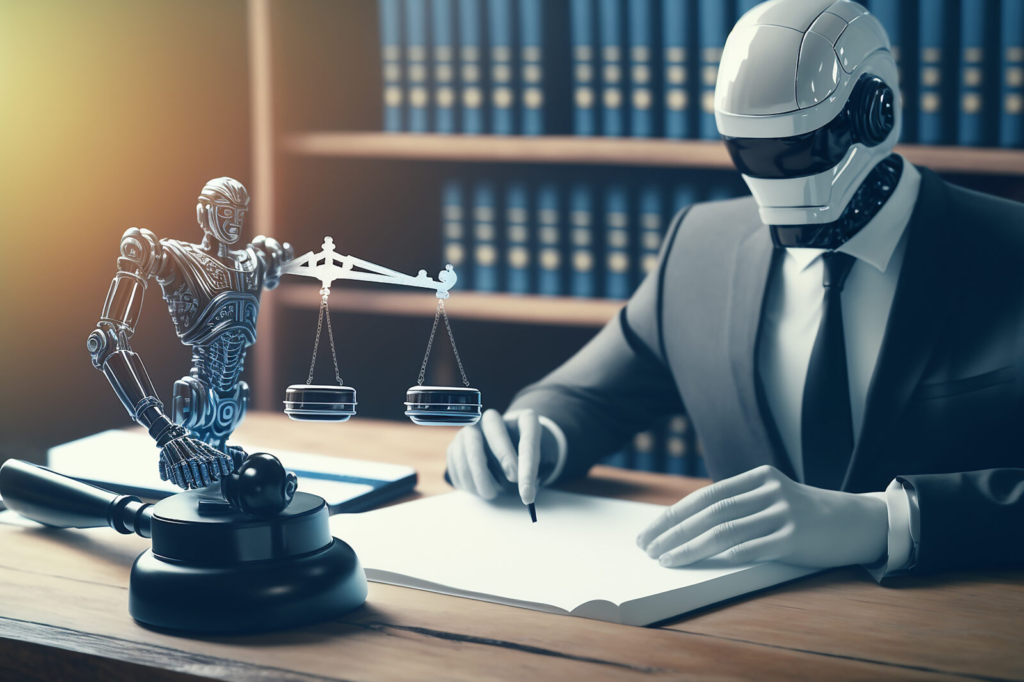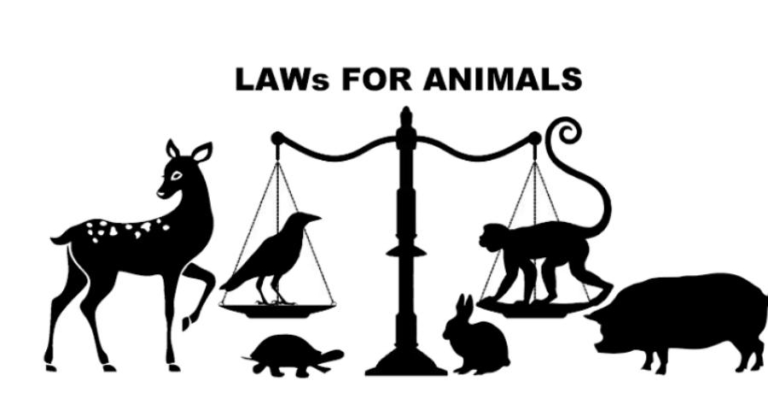
Abstract
Artificial Intelligence (AI) is slowly but surely finding its place in the legal world. In a country like India, where court cases often take years or even decades to resolve, AI offers a powerful opportunity to make the justice system work faster and more efficiently. By assisting in legal research, predicting case outcomes, managing documents, and supporting judges with data analysis, AI can ease the burden on courts and help lawyers work more effectively. However, this advancement also brings serious concerns. Questions about fairness, transparency, misuse of data, and the risk of bias in algorithms must be addressed.
This paper explores both the potential and the pitfalls of AI in the legal system, with a special focus on how India is beginning to adopt such tools. It argues that while AI can improve access to justice and reduce delays, it must be used carefully, with proper legal safeguards, human oversight, and a clear commitment to constitutional values.
Introduction
Artificial Intelligence has become a key part of how modern societies function. It’s used in hospitals to detect illnesses, in banks to prevent fraud, and in smartphones to make our lives easier. Slowly, it’s making its way into courtrooms and law offices too. In India, where the judicial system is weighed down by more than five crore pending cases, there is a growing need for innovation—and AI might just be part of the solution.
The Indian legal system faces several long-standing challenges: a shortage of judges, over-complicated procedures, limited access for ordinary citizens, and a slow pace of reform. AI offers practical tools that could help ease some of these burdens. For instance, SUPACE, an AI tool developed by the Supreme Court, helps judges by summarizing large case files and pointing out relevant facts1. Another tool, SUVAS, allows judgments to be quickly translated into multiple regional languages, making the legal system more accessible2. Projects like e-Courts and the National Judicial Data Grid (NJDG)3 are already helping courts go digital, but AI could take this further. NJDG works as a monitoring tool to identify, manage and reduce pendency of cases.
- It helps in providing timely inputs for making policy decisions to reduce delays in disposing of cases and helps in reducing case pendency.
- It also facilitates better monitoring of court performance and systemic bottlenecks, and, thus, serves as an efficient resource management tool.
That said, the role of AI in law must be handled with care. Unlike sectors like retail or finance, legal matters involve personal rights, ethics, and social impact. AI cannot understand human emotions, it may reflect biases in data, and its decisions can be difficult to explain. This paper looks at how AI is being used in India and abroad, what benefits it can offer, and why it is important to have strong checks in place. Technology should support justice—not replace it—and the human role in legal decision-making must remain at the centre.
Using AI to Predict Court Decisions
One of the most promising applications of Artificial Intelligence in the legal system is its ability to analyse past court judgments and predict how similar cases might be decided. This approach—often referred to as predictive justice4—can help lawyers assess the strengths and weaknesses of a case more effectively. For judges, it offers useful insights into past rulings and patterns, making it easier to maintain consistency in decisions.
In India, AI is already being tested in this capacity. For example, SUPACE, the Supreme Court’s AI-based tool, helps judges by identifying key facts, relevant precedents, and legal issues from case documents. It doesn’t replace human judgment but acts as a smart assistant that saves time and improves focus. Another initiative, SUVAS, enables judgments to be translated into various regional languages, making legal information more accessible to people across different states.
Digital platforms such as the e-Courts Project and the National Judicial Data Grid (NJDG) have also played a vital role in supporting AI integration. They have made case filings, status tracking, and access to court records more efficient and transparent.Internationally, countries like Estonia, the United States, and the United Kingdom have also begun using AI for functions like resolving small claims disputes, assessing risk in criminal cases, and streamlining court scheduling. These global examples show how AI, when thoughtfully implemented, can add significant value to the justice system.

Predictive Justice and Case Outcomes
AI can sift through thousands of court rulings and extract patterns that might indicate how future cases could unfold. This predictive capability is particularly helpful for lawyers preparing legal arguments, as it gives them a clearer picture of how similar matters have been handled before. Judges can also benefit by examining sentencing trends and maintaining consistency across cases.
In countries like the United States and the United Kingdom, tools such as COMPAS5 and HART 6have been used to evaluate the likelihood of re-offending in criminal matters. These tools provide judges with data-driven risk assessments during bail and sentencing decisions. However, these systems have also faced criticism for potential bias, especially when they rely on flawed or historically prejudiced data.
India’s SUPACE represents an initial move toward predictive justice, offering judges a more efficient way to manage case files and legal research. However, it’s crucial to remember that AI predictions are only as reliable as the data they are trained on. If the data reflects social or institutional biases, those biases can be unintentionally repeated by the system. This makes transparency and human oversight essential. AI should help guide decisions—not dictate them—and must always work under the supervision of a trained legal mind.
Court procedures often involve a lot of paperwork, from filing petitions to issuing summons and scheduling hearings. These tasks, though routine, take up a significant amount of time and resources. AI can help by automating many of these administrative functions, freeing up valuable time for legal professionals to focus on the core issues of a case.
The COVID-19 pandemic pushed many courts around the world, including those in India, to embrace technology more quickly. Video conferencing became the new norm for hearings, and e-filing systems allowed lawyers to submit documents online7. This shift not only ensured continuity during lockdowns but also made court processes more transparent and accessible.
Even everyday matters like challan settlements are now being handled online in many Indian states, which has significantly reduced the need for physical visits to traffic courts. In Estonia, a small but tech-forward country, AI is even used to resolve minor legal disputes, such as traffic violations, under a judge’s supervision. This has helped reduce the load on courts and sped up the delivery of justice8.
While India has made progress through the e-Courts Project and the National Judicial Data Grid, challenges remain. Many citizens still lack access to the internet or basic digital literacy. Some court staff are unfamiliar with using digital tools, which can slow down adoption. For AI to work effectively in court procedures, there needs to be ongoing training, infrastructure development, and a clear commitment to making technology work for everyone—not just those who are digitally literate.
AI for Legal Research and Document Work
Legal research can take hours, sometimes days, especially when you’re trying to find the right precedent or statute from a sea of case law. AI tools are starting to ease that burden. In India, platforms like Manupatra and SCC Online now use AI to suggest similar cases, highlight key rulings, and even narrow down search results—all in a fraction of the time.
Around the world, lawyers are also using AI to review contracts and flag potential risks or unclear clauses. These tools don’t just save time—they make legal services more affordable and accessible, especially for smaller firms and individuals who might otherwise struggle with legal costs9.
Rather than replacing lawyers, AI is helping them work smarter. By taking care of the routine and technical tasks, it gives legal professionals more time to focus on what really matters—understanding the law, building arguments, and helping people.
Ethical and Legal Challenges & Understanding AI’s Limitations
Despite all its benefits, AI has its limits—and in law, those limits really matter. The biggest one is that AI doesn’t understand people. It can’t feel empathy, recognise injustice, or consider human experiences. For example, a judge might take into account why someone committed a crime—maybe out of poverty or desperation. AI can’t do that. It sees facts, not feelings.
There’s also the problem of transparency. Many AI systems give answers without explaining how they got there. But in the legal world, that’s not good enough. People have a right to know the reasoning behind a decision—especially if that decision affects their freedom or rights.
Privacy is another concern. AI systems often rely on personal and sensitive data, which must be handled carefully. That’s why laws like India’s Digital Personal Data Protection Act, 2023 are so important—and why any AI used in the legal system has to follow them strictly.
And then there’s bias. If the data used to train an AI reflects existing prejudices, the system could carry those forward into its suggestions. That’s why AI tools used in law need regular checks, diverse training data, and most importantly—human oversight.
At the end of the day, AI should help the legal system, not control it. Judges and lawyers must stay in charge, and we need clear rules, regular reviews, and proper training so that AI supports justice, not complicates it.

Case Study: Pegasus Spyware
One of the most significant examples of technology intersecting with the legal system is the Pegasus spyware controversy. Developed by the Israeli firm NSO Group, Pegasus is a powerful surveillance tool capable of accessing a smartphone’s data, messages, calls, and even remotely activating its camera and microphone—all without the user’s knowledge.
In 2021, global investigations revealed that Pegasus had allegedly been used to monitor journalists, activists, lawyers, and political figures, including in India. The revelations raised serious concerns about privacy, misuse of technology, and the potential violation of fundamental rights. The matter reached the Supreme Court of India, which responded by setting up an independent expert committee to investigate whether the spyware was used unlawfully and whether citizens’ constitutional rights had been compromised10.
This case underscores how the rapid growth of digital tools like AI and surveillance software has outpaced existing legal frameworks. It raises pressing questions about data privacy, state accountability, and the need for stronger digital regulations. The Pegasus episode serves as a reminder that technology, when left unchecked, can be used not only for public good but also for surveillance and control. Legal systems must evolve to protect citizens from such misuse while upholding transparency and democratic values
Why AI Cannot Replace the Judiciary
Artificial Intelligence may be a powerful tool, but it cannot replace the core of what makes judicial decision-making meaningful: human judgment. Courts are not just spaces for applying rules—they are guardians of fairness, equity, and constitutional values. Legal decisions often require empathy, moral reasoning, and the ability to weigh human circumstances—things no machine can truly replicate.
AI, no matter how advanced, cannot understand personal suffering, social inequality, or emotional nuance. For instance, in a theft case driven by poverty, a judge may choose compassion over punishment. An AI system, however, may focus solely on legal definitions, ignoring deeper context11.
Judicial interpretation also involves flexibility and forward thinking. Judges evolve the law through reasoning and public interest, while AI remains limited to existing data and patterns. Furthermore, responsibility and accountability in legal outcomes must rest with humans, not algorithms. Machines cannot be held morally or legally answerable for flawed or biased outcomes.
While AI can support judges—by managing data or helping with research—it must never be the final authority. The principle of “human-in-the-loop” is essential to preserve justice that is both efficient and humane.
The Road Ahead: AI and Indian Law
As India explores the role of Artificial Intelligence in law, the focus must remain on using it wisely—improving efficiency without compromising fairness. AI should not just be adopted for convenience, but to make justice more accessible, inclusive, and transparent.
To move forward, courts should prioritise building open-source, accountable AI tools developed with input from both legal and tech experts. These systems must follow constitutional values and protect fundamental rights. Training is also key—judges, lawyers, and staff need digital literacy to use AI effectively and ethically.
Law schools should introduce students to topics like AI ethics, data protection, and legal tech, so that future professionals are better prepared for a changing legal landscape.
Most importantly, India needs clear legal guidelines to govern AI use in courts. These should include privacy safeguards, regular audits, and human oversight mechanisms. If approached responsibly, AI can help India build a faster, fairer, and more accessible justice system, without losing sight of human values.
Conclusion
Artificial Intelligence is already reshaping parts of the legal system—from simplifying research to assisting in court procedures. Its potential to make justice faster and more accessible is undeniable. However, technology alone cannot ensure fairness. AI must be used as a tool—not a decision-maker. It lacks the empathy, moral reasoning, and accountability that human judges bring to legal decisions. While it can support the system, the core of justice must remain human-led.
With proper rules, training, and oversight, India can embrace AI to improve efficiency without compromising the values of its legal system. The future lies not in replacing people with machines, but in using technology to strengthen justice for all.
Refrences
- analyticsindiamag.com/ai-features/behind-supace-the-ai-po
- https://analyticsindiamag.com/ai-news-updates/the-supreme-court-of-india-gets-a-new-ai-portal-suvas/
- National Judicial Data Grid : a database of orders, judgments and case details created as an online platform under the eCourts Project -ForumIAS Blo
- www.cppr.in.
- https://doi.org/10.1007/s10506-024-09389-8
- Helping police make custody decisions using artificial intelligence | University of Cambridge
- Video Conference Technology in Indian Judiciary System
- Estonia is building a ‘robot judge’ to help clear a legal backlog | World Economic Forum
- AI in Contract Review and Drafting: Risks & Opportunities – TheRightContract
- https://www.scconline.com/blog/post/2022/02/07/pegasus-case
- The Courtroom Algorithm: Why AI Cannot Replace Judges, Arbitrators and Other ADR Practitioners
Footnotes
- Shathi S., Behind SUPACE: The AI Portal Of The Supreme Court of India, ANALYTICS INDIA MAG (May 29, 2021) ↩︎
- Shritama Saha, The Supreme Court of India Gets A New AI Portal, SUVAS, ANALYTICS INDIA MAG, (December 22, 2022) ↩︎
- Abdul, National Judicial Data Grid : a database of orders, judgments and case details created as an online platform under the eCourts Project, FORUMIAS, (August 24th, 2023) ↩︎
- Bhishm Khanna, Predictive Justice: Using AI for Justice, CPPR Pol’y Brief, May 2021, available at ↩︎
- Engel, C., Linhardt, L. & Schubert, M. Code is law: how COMPAS affects the way the judiciary handles the risk of recidivism. Artif Intell Law 33, 383–404 (2025), https://doi.org/10.1007/s10506-024-09389-8 ↩︎
- Helping police make custody decisions using artificial intelligence, UNIV. OF CAMBRIDGE (Feb 26, 2018) ↩︎
- Syam Priyanka Badri,Video Conference Technology in Indian Judiciary System ↩︎
- Victor Tangermann, Estonia is building a ‘robot judge’ to help clear a legal backlog, WORLD ECONOMIC FORUM, (Mar 26, 2019) ↩︎
- Monty AnNayef, AI in Contract Review and Drafting: Risks & Opportunities, THE RIGHT CONTRACT, January 29, 2025 ↩︎
- Shubham Priyadarshi, Analysing the Pegasus Case: Sentinel Reins in the Winged Horse, SSC ONLINE TIMES(Feb 7, 2022) ↩︎
- Julius Nkafu, The Courtroom Algorithm: Why AI Cannot Replace Judges, Arbitrators and Other ADR Practitioners, THE BARRIER GROUP, April 2, 2025 ↩︎




